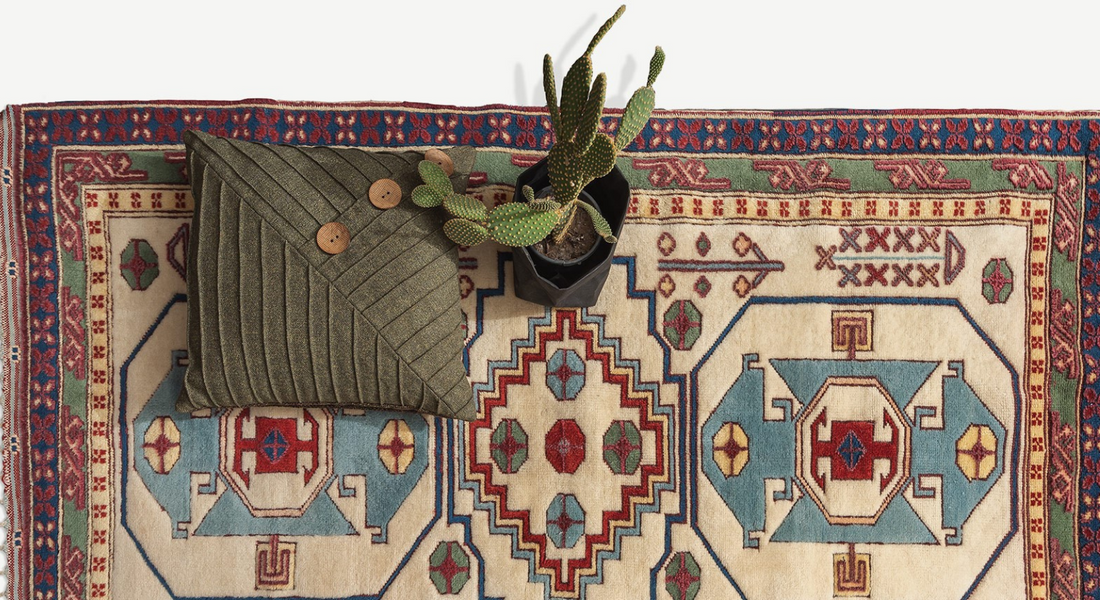History of Milas Rugs

Although the exact dating cannot be done from the past to the present, carpet weaving was seen intensely in Anatolia between the 16th and 17th centuries, and the Milas rug came to the fore in this period. Milas carpets were originally produced as prayer rugs in accordance with the Yoruk lifestyle. Practicality is essential in nomadic life. For them, small-sized weavings vital since it was easier for them to tidy up and portable easier. However, these carpets also varied in size due to the demands from the merchants over time. The opening of the Eastern Carpet by the British in the 19th century caused the carpet woven in Milas to reflect the European Baroque style, cultural transition, and variety of motifs. The increase in plant decorations and the insertion of a “core” in Milas carpets coincide with this period.
Milas carpets are also called Milas, Ada Milas, Yilanli Milas, Bozalan Ladik, Karacahisar belly, Siseli, Patlicanli, Cafer, Gemisuyu, and Elikoynunda according to their patterns. The figures and motifs used in these carpets keep the traces of past lives. For instance, the type called "Ada Milas" is one of the oldest examples of classical Milas rugs. There are different versions of how the carpet got its name. According to the legend, the name of this patterned carpet was derived from the Carian Queen Island, who lived in the 4th century BC. She was a native of this region and a contemporary of Alexander the Great. Another saying indicates that this carpet got its name since these were first woven by immigrants who came to the island of Istankoy (Cos), one of the Aegean islands. These immigrants came to Cos and settled in the Milas region due to the Ottomans' withdrawal from the Balkans and Aegean islands in the 19th century. Since “island” means "ada" in Turkish, it is thought that it got its name from that place. In addition, the stylized carnation bouquets (another signification of the word "ada"), which is placed on a branch around the rug, are also thought to be given the carpets' name.
The figures and motifs on the carpets woven around Milas today bear the traces of the past. It is known that these carpets, which are woven in the Milas district center, and surrounding villages of Mugla province, came with the Turkmen who started to settle in the region after the region was conquered in 1261. Milas, the center of the Menteseogullari Principality, was annexed to the Ottoman Empire in 1415. Today, the oldest examples in museums are woven in the 16th century, prayer Milas rugs.
Also, they were woven for the needs of the family and the dowry of young girls. However, over time, it has become an export product. Extensive production of Milas carpets for the market took place for the first time in 1896. In those years, a company started mass production of Milas carpets by bringing a carpet yarn dyer, a designer named Harlambo, and 45 carpet looms from Oushak. After that day, European-origin dyes became popular in Milas carpets; the use of only red on the floor, the samples were taken from plants, and the shape of the core were the main features of the prayer rugs here. In those years, 1500 to 2000 carpets were exported annually from Milas. However, the real peak in Milas carpet business was in 1909, during the Second Constitutional Period. Milas District Governor opened a carpet factory in Milas during this period. In another carpet factory in Milas during that time, 50-60 girls and women were weaving carpets.
At that time, carpet threads were spun in Milas, dyed in Izmir, and carpets were woven in Milas and its villages.
Materials Used in Milas Rugs

Milas Carpets continue to weave on looms called "istar," preserving the tradition of "double knot," "wool," and "root dye." Today, weaving, which we can identify in many villages of Milas and Mugla, is tried to be continued by one or two producers in Bodrum Karaova, Karacahisar, Oren, Türkevleri, Çokertme, Bozalan, Kayaonu, Gurcegiz, Bayir, Mumcular and Citlik villages.
All Milas carpets are double knotted, which is known as "Turkish knots." They are 100% wool carpets. All the weft, warp, and loop threads are wool. The quality standard of Milas carpets determined by the Turkish Standards Institute is 26 x 40 knots per square centimeter.
Common Motifs and Patterns Found in Milas Rugs

An ornament or image consisting of lines, colors, and shapes appearing on the surface of an object is called a pattern. For example, the pattern in carpet is; the pictures of the carpet that is desired to be made, drawn in accordance with the quality of the carpet, prepared in the form of coloring the millimeter squared papers. On checkered paper, each small square is a knot in the rug. The number of knots thrown on 1 dm2 shows the quality of the carpet.
Hence, the element that gives carpets a national component is their patterns and motifs. What makes the carpet different from being a simple household item is its character that reflects the cultural accumulation of years. The tradition, social and cultural differences in various regions have brought diversity to carpet art in patterns and motifs.
Our weavings, which are a product of our cultural richness, have mediated our world of emotions and thoughts as a means of nonverbal communication. The woman who weaved the carpet conveyed her joy and pain to the carpet she weaved. Thus, various kinds of motifs were formed. Typical symbol motifs of Milas Carpets are Esme, Jingilli Cafer, tobacco leaf, Eggplant Leaf, Mirrored Shoe, ala bead, curved lake, smart sailor's water, bare drilling, waterway, Ladik tulip, well-behaved Cafer, basal bending, chicken's feet, trapezoidal saw, snake amulet, and essential motif is the tree of life. The variety of colors and motifs are striking in the Milas carpet.
The villages of Karacahisar and Bozalan and the villages of the Karaova region of Bodrum are the centers of Milas carpet weaving. Karacahisar carpets are naveled and decorated with plant motifs. Bozalan carpets have altars instead of a navel, and stylized flower motifs are used. Carpets without altars are also woven in this region. Although they are the same size, Karacahisar villagers refer to the ones they weave as "mattresses" and to those woven in Gereme as "carpets."
The motifs are ordered from outside to inside as notch, straight, small water, big water, mihrab, belly, and bending. The notch consists of a series of adjacent triangles, one upside down and the other straight. There is a thin and white line called "right" on both sides of the notch series. The border consisting of plant and flower motifs in width, usually on a white background, is called "little water."
For example, the “leaf” motif signifies birth and death. The falling leaf represents death, and the sprouting leaf represents birth. The leaves that turn green in the spring are the signs of the rebirth of nature, and the leaves that fall in the autumn are the expression of death. Another common motif is an arrow. It is a symbol of courage and fearlessness. In our pre-Islamic and post-Islamic culture, the "bow-arrow" motif was very important. The importance of each motif and its value among people are reflected in the carpet motifs.
Main Colors Found in Milas Rugs

Anatolia has been a place of home for various civilizations for centuries. Each one has left different traces and rich culture behind. The Turks, who have this accumulated heritage, have added new ones to their values and produced our admirable handicraft products today.
As well as the patterns and motifs of Milas carpets, the color harmony and attractiveness of carpet types also reflect the characteristic feature of the Milas region. One of the most distinctive features of Milas carpets is the harmonious use of light and pastel colors. Buff, brick red, and green tones close to blue provide a nice appeal to the carpet. The reputation of the carpets woven with this general color image originating from tobacco and earth has exceeded the country's borders.
In Milas carpets, with and without mihrab, dominant colors, which reflect the culture of the centuries, are mostly peculiar tones of reddish-brown, a very dark yellow, and brown. The carpets do represent a color of different tones and harmony, with 26 known colors. These colors are colored in the waters of the plants existing in nature, which are passed through various stages, and this is called “kok boya," which means "root (natural) dye.”
Root Dye in Milas Rugs

Today, the colors in the real Ada Milas carpets, which are made using root dye. Peculiar reddish colors are made of pyrene (Erica Vulgaris), which is a typical Aegean plant; yellow and its tones are obtained from leaves of peach and apricot trees; brown from walnut leaves, very dark brownish-yellow from acorns; the green from artichoke leaves and mint; "Pistachio green" from an almond branch and tree of life, and black from wool lying in the mud for a week. The carpets in which the color harmony is best exhibited are the Karaova carpets, which are located within the borders of Bozalan, Karacahisar, and Bodrum. Our villagers, who live in harmony with nature, were able to obtain various colors by using almost every plant.

